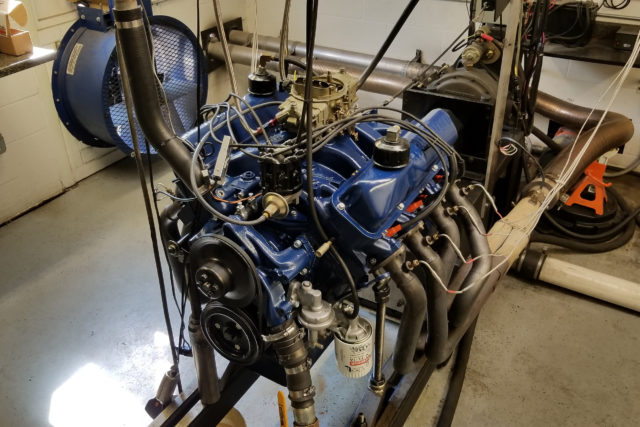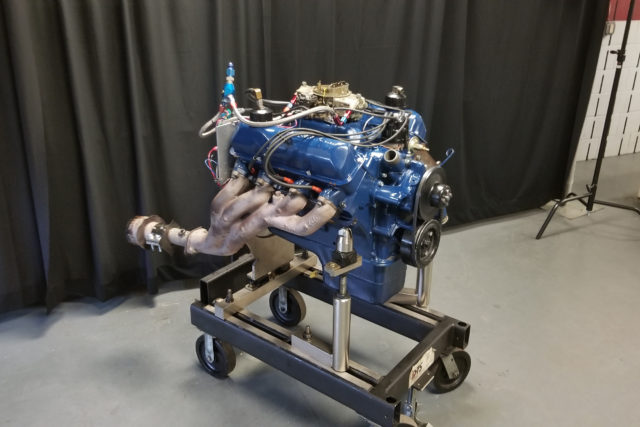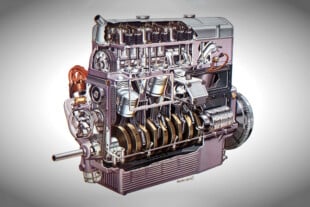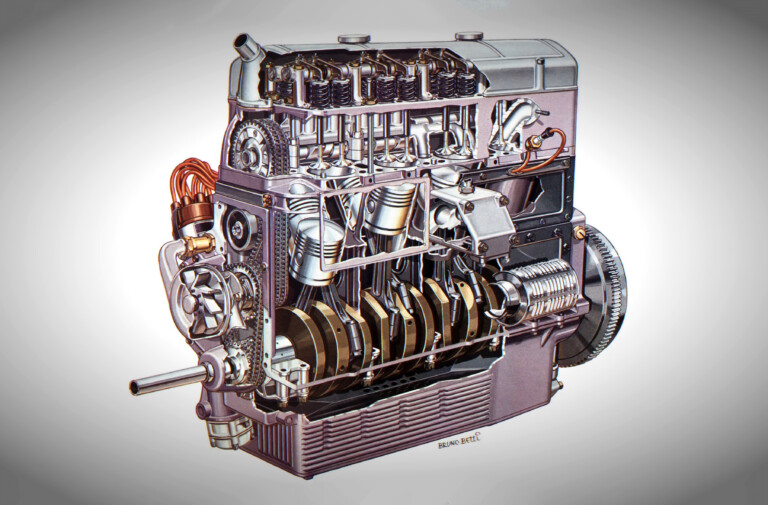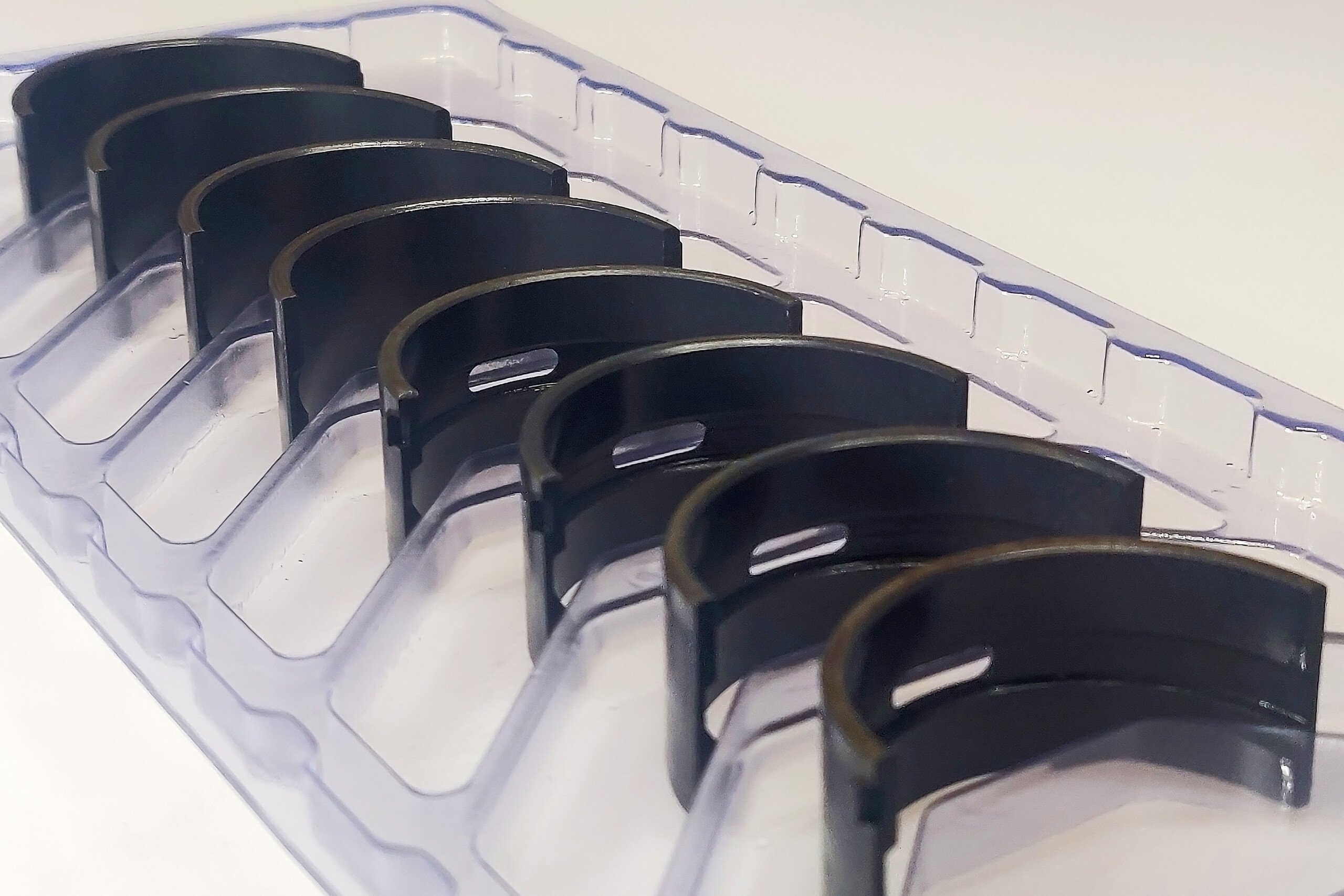The Traditional Muscle class in the Engine Masters Challenge rewards competitors who can use street-going parts to product solid horsepower numbers from the old-school muscle car engine of their choice: think small- and big-block Chevrolet and Ford engines, the LA-series Chrysler powerplants, and the engine that is most likely the oddball of them all, the Ford FE engine. It was used in Ford passenger cars and trucks between 1958 and 1976, which spans the entire length of the first muscle car revolution. The Mustang, Thunderbird, Fairlane, and Galaxie were just some of the models to use the FE engine configuration, and today there exists a healthy market for the restoration and rebuilding of these engines.
Barry Rabotnick and the team at Survival Motorsports have been one of the leading sources for FE engine parts and pieces; over the last dozen years they’ve been competing in Engine Masters events with the platform, both as a personal challenge and as part of the search for a forum to display the capabilities of FE power.
“They had it broken up into small-block and big-block categories with slightly different rules for these two groupings. There was some handicapping involved to try to establish parity between the small- and big-block entries. Probably the biggest variable there was valve sizing; RPM range and camshaft were also limited differently between the two. I chose to run this engine as a big-block,” says Rabotnick.
“The rpm range for scoring ranged from 3,500 rpm to 6,300 rpm for the big-blocks. Other limitations included 11.0:1 compression, the use of a 100-octane spec fuel, a flat-tappet camshaft and hydraulic lifters. Intakes were relegated to a cast manifold with no welding or epoxy allowed, an accepted cast-aluminum cylinder head, and a single 4150-style carburetor with a maximum throttle bore diameter. by the rules the engines were supposed to be like they would be for a high-performance street car.”
In years past Survival’s engines have been selected a primary competitor for the event, but this year the company stepped back to become an alternate and give some new blood an opportunity to enter the competition. But when that new blood bowed out just one month prior to dyno day, Rabotnick received a call and was asked to have his engine ready to go for the event. This yearly event is a huge undertaking, with many competitors taking the entire year to create, test, and refine their engine packages to take advantage of every loophole in the rules. Rabotnick has done that in years past, but with the short deadline he decided to try a different tactic for 2017.
“In the past I’ve always brought highly-detailed engines to provide a visually-attractive engine that performed well. But this time, since I was an alternate, I decides to bring an engine that used parts we had in the shop. So we built an engine that would pass as a crate engine-style configuration for us instead of an exotic 427-based engine like we’ve always brought,” says Rabotnick.
This time the decision was made to use an engine based on a 390, perhaps one of the most pedestrian versions of the FE engine. It included one of Survival’s stroker kits including a 4.25-inch-stroke crankshaft, Mahle flat-top pistons, and a set of their own Survival Motorsports-designed, CNC-ported cylinder head castings which have been slightly milled to get the engine as close to the 11.0:1 compression ratio specification as possible. This is the type of FE engine they are building every week for their customers.
The block has been machined .040-inch oversize; when combined with the stroker kit’s long-arm crank and 6.700-inch H-beam connecting rods, the engine’s displacement maxes out at 447 cubic inches. The intake manifold is an Edelbrock Performer RPM unit which has been port-matched to the cylinder heads, and the cast-iron long-tube exhaust manifolds are rare 1963 427 Galaxie parts.
“A friend of mine from one of the FE forums lent them to me. They’re probably the coolest item on the whole engine,” says Rabotnick.
In the interest of sticking with the off-the-shelf theme, one of Comp Cams’ 294S solid flat-tappet camshafts was used with hydraulic lifters on it–248 degrees of duration at .050-inch lift and .605-inch gross lift.
“That is a cam that goes back to the 1970s or 80s. It’s the kind of cam you used to get from Summit Racing back in the 80s. It’s really nothing special,” he says.
An 850-cfm vacuum-secondary Holley carburetor reproduction unit from the early 1990s was fitted atop the manifold, complete with the choke, choke tower, and all necessary elements for operation.
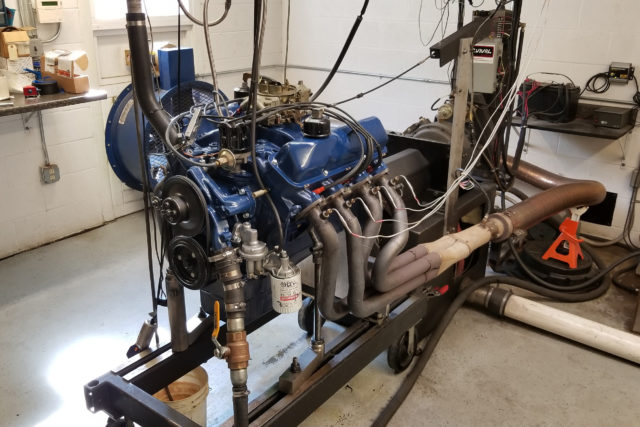
On the dyno at Survival Motorsports with true long-tube headers, the engine cranked out 554 horsepower; due to the different operating conditions and the Galaxie manifolds used in the testing at the Engine Masters Challenge, it topped out at 552 horsepower.
They also decided to mask the FE engine’s appearance using a number of interesting touches.
“We wanted to make it look like it got pulled out of a station wagon, or a pickup truck,” says Rabotnick. “We used factory Ford valve covers painted blue, we painted the cylinder heads and the intake manifold blue. The stock water pump from 1968 is painted blue, and the oil pan is a Ford performance deep pan out of the Ford Performance Parts catalog from the 1960s. Externally, there are no new parts showing on the outside of the engine. It looks pretty damned plain.”
The stock Ford FE distributor was rebuilt by Tim Young and hooked to 7mm reproduction Autolite spark plug wires. Hiding inside the distributor is a magnetic trigger unit that’s hooked to an ignition system of Young’s design.
On the dyno at the Engine Masters Challenge, this engine mustered up a max of 552 horsepower at 6,300 rpm, and made peak torque of 526.7 lb-ft at 4,400 rpm.
“The cool factor is pretty high, and the fact that it’s based on a 390.. it would be a hell of a stealth engine if you were trying to hide its capabilities. You’d glance down at this thing at a car show and wouldn’t even stop to look at it,” sums up Rabotnick.



